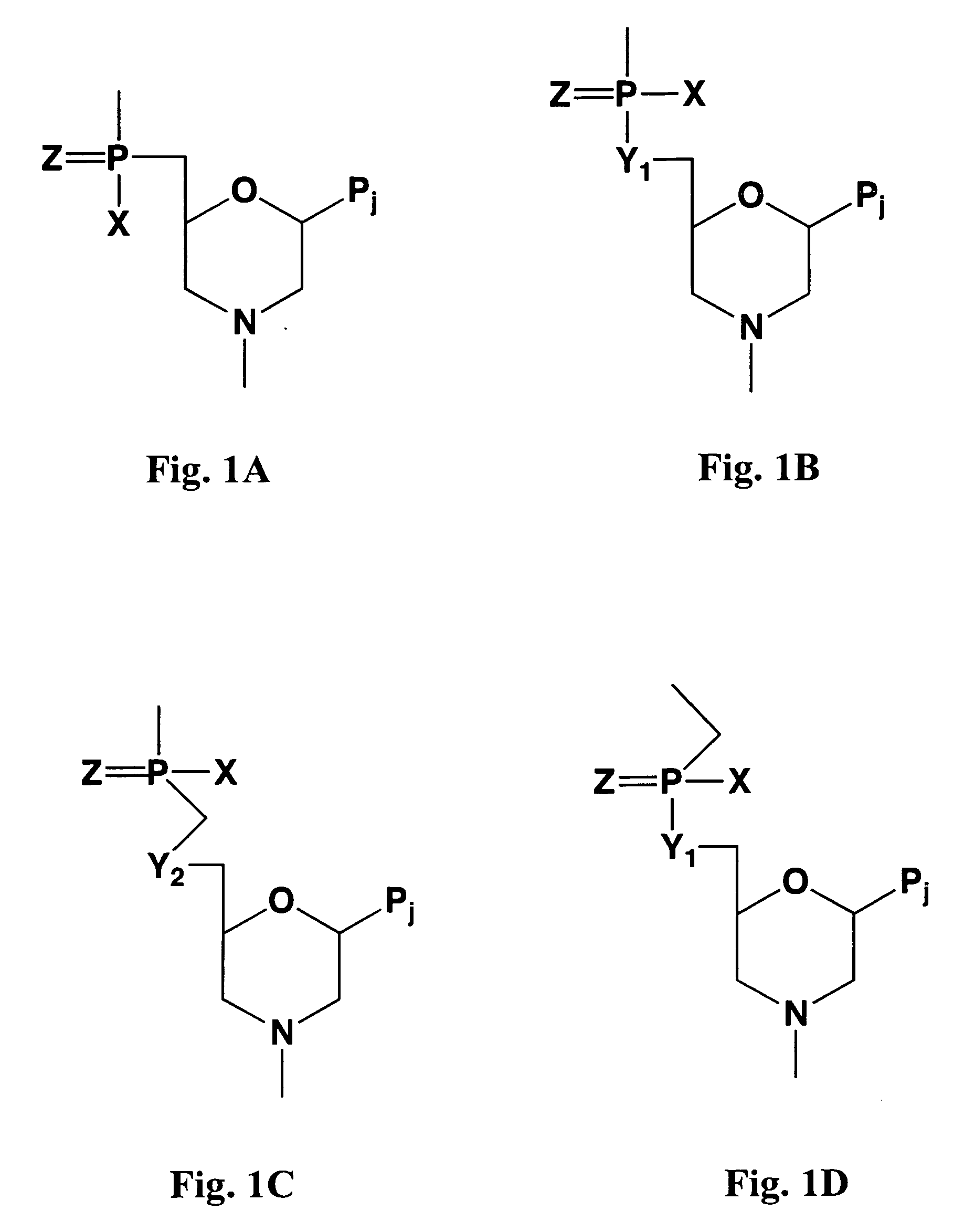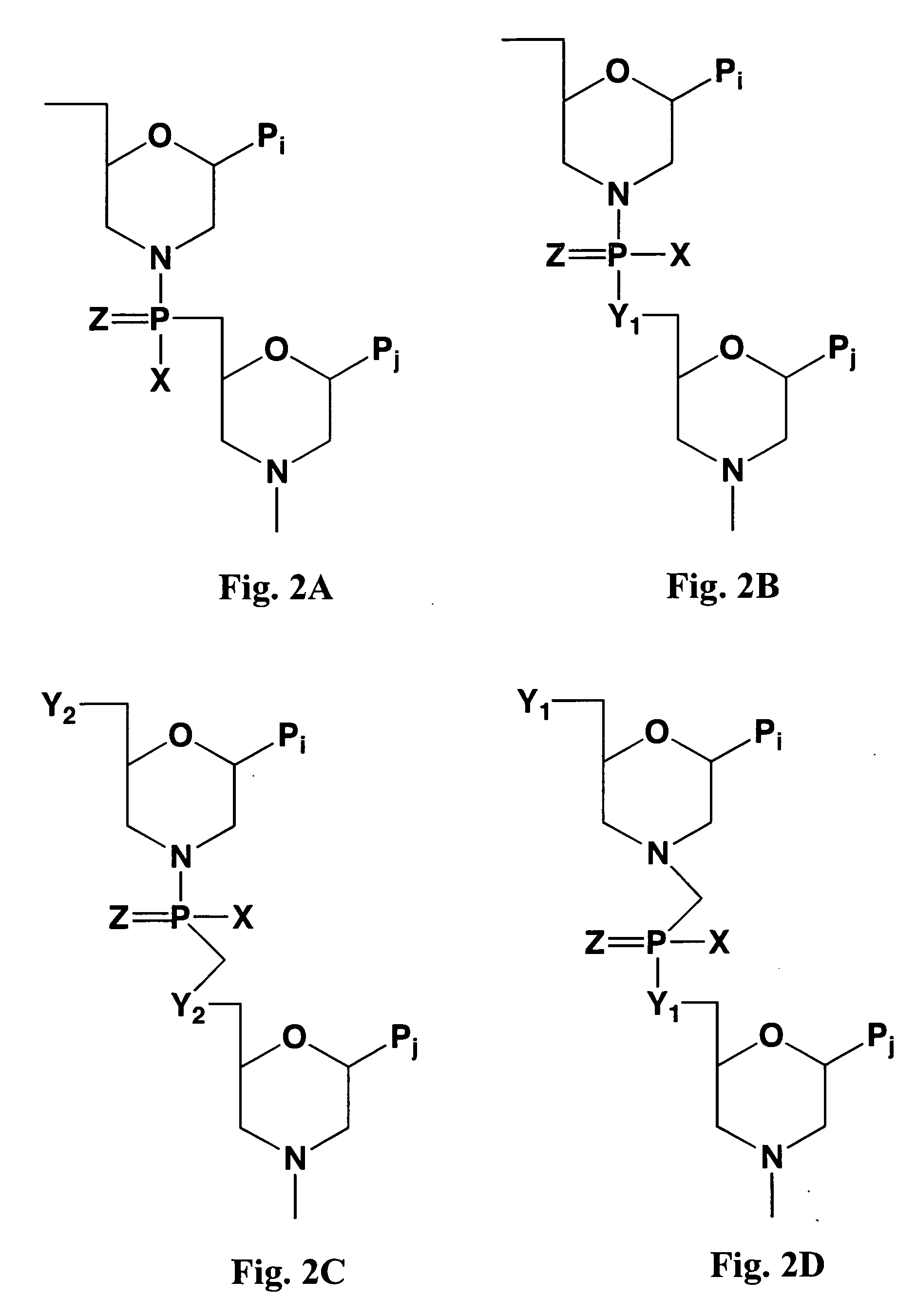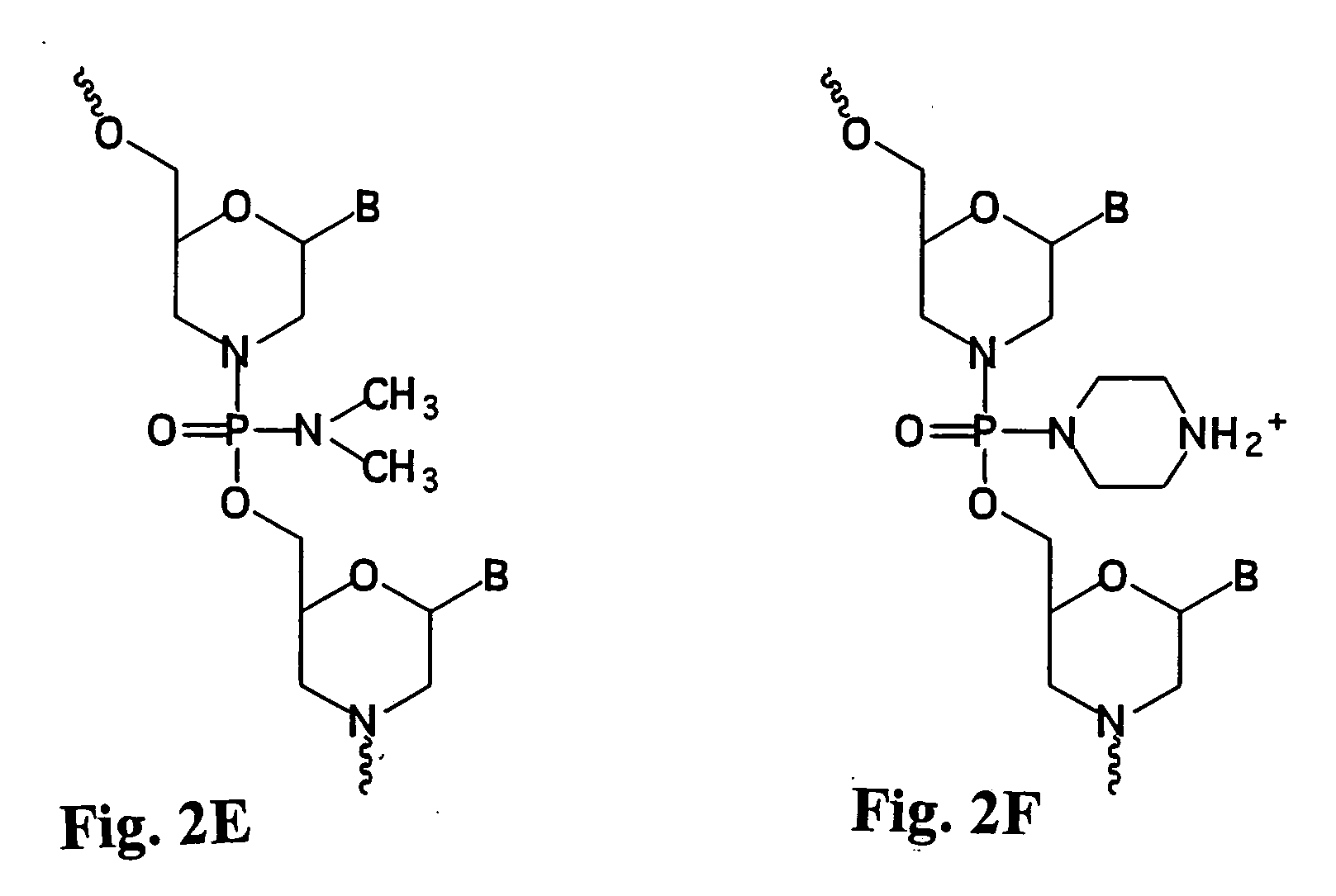Antisense antibacterial method and compound
a technology of antibacterial and antibacterial compound, applied in the field ofoligonucleotide compounds, can solve the problems of low antibacterial activity, lack of current research efforts to find new types of antibiotics, and high concentration of antisens
- Summary
- Abstract
- Description
- Claims
- Application Information
AI Technical Summary
Benefits of technology
Problems solved by technology
Method used
Image
Examples
example 1
Antisense Activity as a Function of Varying Length and Target Position
[0217] PMO (Table 4) of various length (from 7 to 20 bases) that are complementary to the region around the start codon of myc-luc mRNA were added to growing cultures of E. coli SM101 (pSE380myc-luc). One series of PMO was constructed by reducing the length at the 3′ end (SEQ ID NOS:59-71), and another by reducing the length at the 5′ end (SEQ ID NOS:71-83). After 8 h in culture, luciferase was measured. Compared to a culture without PMO, 3′ truncated PMO inhibited luciferase from 16 to 95% (FIG. 4, striped bars), and 5′ truncated PMO inhibited luciferase from 6 to 89% (FIG. 4, solid bars). Results are discussed above.
[0218] PMO from the same two series were added individually to bacterial, cell-free protein synthesis reactions programmed to express myc-luciferase. These experiments were designed to eliminate the effects of entry of PMO into the cell, and to test the PMO at 37° C. instead of the permissive growt...
example 2
Acyl Carrier Protein as an Endogenous Bacterial Gene Target
[0224] The effect of PMO was tested on an endogenous bacterial gene that encodes acyl carrier protein, acpP, which is essential for viability (Zhang and Cronan 1996) and has been used previously to inhibit bacterial growth (Good, Awasthi et al. 2001; Geller, Deere et al. 2003). PMO from 6 to 20 bases in length and complementary to region around the start codon in mRNA for acpP (Table 3, SEQ ID NOS:105-114) were added to growing cultures of AS19 and growth at 37 C was monitored by optical density and viable cell counts. Growth curves were normal for all cultures except for that with the 11 base PMO, which caused significant inhibition (FIG. 9A). Slight and reproducible, but statistically insignificant inhibitions of OD occurred in cultures with the 10 and 14 base PMO. Viable cells were significantly reduced in 8 h cultures that contained PMO of 10, 11 or 14 bases (FIG. 9B). No reduction in CFU was apparent in cultures treate...
example 3
In vivo Antisense Antibacterial Activity
[0226] Groups of 4 mice were injected IP with E. coli AS19, which has a genetic defect that makes it abnormally permeable to high MW solutes. Immediately following infection, each mouse was injected IP with 300 μg of an 11-base PMO complementary to acpP, an 11-base nonsense sequence PMO, or PBS.
[0227] Peritoneal lavages were collected at 2, 7, 13, and 23 h post-infection, and plated for bacteria. The results show that at all times analyzed, the acpP PMO-treated mice had significantly (P<0.05) lower CFU than the mice treated with either nonsense PMO or PBS (FIG. 13). The differences between the acpP PMO-treated group and the nonsense PMO control ranges from 39-fold at 2 h to 600-fold at 23 h.
[0228] The same PMOs were again tested, except with E. coli SM105, which has a normal outer membrane. AcpP PMO reduced CFU by 84% compared to nonsense PMO at 12 h post-infection. There was no reduction of CFU at 2, 6, or 24 h (FIG. 14). Mice were injecte...
PUM
| Property | Measurement | Unit |
|---|---|---|
| Tm | aaaaa | aaaaa |
| Tm | aaaaa | aaaaa |
| Tm | aaaaa | aaaaa |
Abstract
Description
Claims
Application Information
 Login to View More
Login to View More - R&D
- Intellectual Property
- Life Sciences
- Materials
- Tech Scout
- Unparalleled Data Quality
- Higher Quality Content
- 60% Fewer Hallucinations
Browse by: Latest US Patents, China's latest patents, Technical Efficacy Thesaurus, Application Domain, Technology Topic, Popular Technical Reports.
© 2025 PatSnap. All rights reserved.Legal|Privacy policy|Modern Slavery Act Transparency Statement|Sitemap|About US| Contact US: help@patsnap.com



